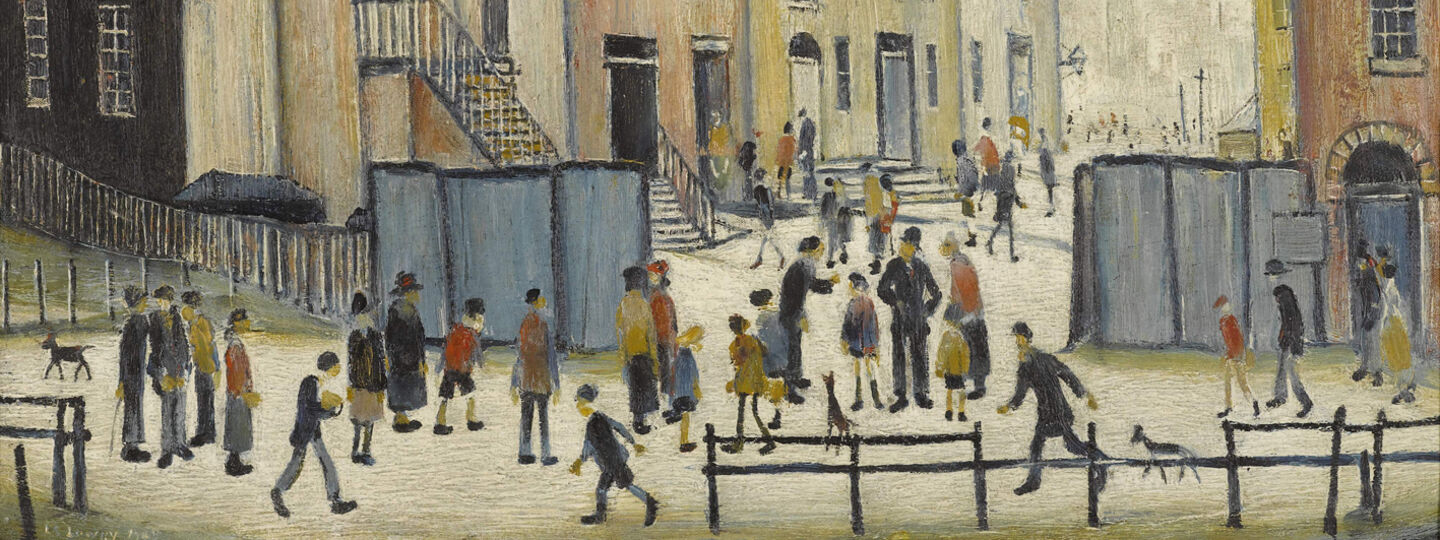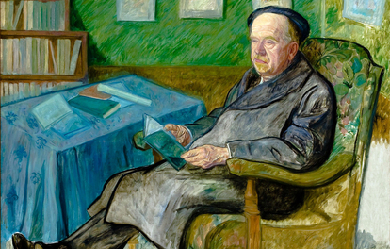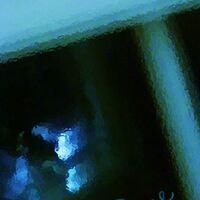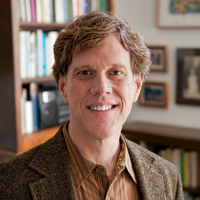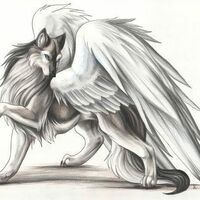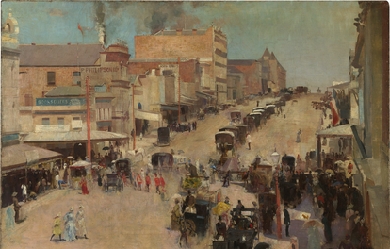
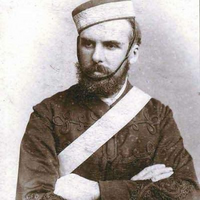
Barcroft Henry Thomas Boake (26 March 1866 – 2 May 1892) was an Australian poet. Born in Sydney, Boake worked as a surveyor and a boundary rider, but is best remembered for his poetry, a volume of which was published five years after his death. Boake is believed to have committed suicide. His body was found hanging by the neck from a stockwhip at Middle Harbour in Sydney eight days after he disappeared on 2 May 1892. One writer on Boake’s life has mentioned that the suicide took place during the 1891-93 depression when the poet was unable to find work, also noting that “it has been suggested that he killed himself for the love of one of the McKeahnie girls,” sisters of the horseman Charlie McKeahnie.

I'm 17 years old. I lost my mother to stage 4 breast cancer almost 3 years ago in June 2011. I started writing poetry in freshman year, after I got an assignment to write a Shakespearean sonnet. I got high praise, so I decided to write more. Not all of my poems rhyme and some are still in the process of being checked over and revised. I love poetry because it is an outlet for me and helps me convey how I feel through my words when I can't show it through emotions. I hope that you will enjoy my work and I will check out yours. Thanks. :)
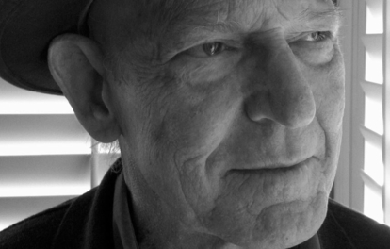
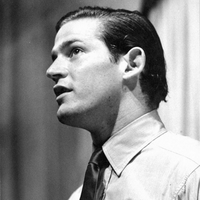
William Craig Berkson (August 30, 1939– June 16, 2016) was an American poet, critic, and teacher who was active in the art and literary worlds from his early twenties on. Early life and education Born in New York City on August 30, 1939, Bill Berkson grew up on Manhattan’s Upper East Side, the only child of Seymour Berkson, general manager of International News Service and later publisher of the New York Journal American, and the fashion publicist Eleanor Lambert. He attended The Day School of the Church of the Heavenly Rest and transferred to Trinity School in 1945. He graduated from Lawrenceville School in 1957. He dropped out of Brown University to return to New York after his father died. He studied poetry at The New School for Social Research with Kenneth Koch. He attended Columbia University and New York University’s Institute of Fine Arts. Having begun writing poetry at Lawrenceville, encouraged there by such teachers as John Silver and the eminent Emily Dickinson scholar, Thomas H. Johnson, he went on to study short story writing with John Hawkes and prosody with S. Foster Damon at Brown. But his full commitment to poetry was prompted under the tutelage of Kenneth Koch in spring, 1959 at the New School for Social Research. It was also through Koch that he was introduced to the poetry and arts community loosely termed the New York School, which in turn led to close friendships with Frank O’Hara and such senior artists as Philip Guston and Alex Katz, as well as with poets and artists of his own generation such as Ron Padgett, Joe Brainard, George Schneeman, Ted Berrigan, Anne Waldman, Jim Carroll and others. Career After leaving Columbia in 1960, Berkson started work as an editorial associate at ARTnews, where he continued for the next three years. During the remainder of the 1960s, he was a regular contributor to both ARTnews and Arts, guest editor at the Museum of Modern Art, an associate producer of a program on art for public television, and taught literature and writing workshops at the New School for Social Research and Yale University. After moving to Northern California in 1970, Berkson began editing and publishing a series of poetry books and magazines under the Big Sky imprint and taught regularly in the California Poets in the Schools program. In 1975 he married the artist Lynn O’Hare; their son Moses Edwin Clay Berkson was born in Bolinas, California, on January 23, 1976. He also has a daughter, Siobhan O’Hare Mora Lopez (b. 1969), and three grandchildren, Henry Berkson and Estella and Lourdes Mora Lopez. His friendships during his California years included those with; Joanne Kyger, Duncan McNaughton and Philip Whalen. Berkson is the author of some twenty collections and pamphlets of poetry—including most recently Portrait and Dream: New & Selected Poems and Expect Delays, both from Coffee House Press. His poems have also appeared in many magazines and anthologies and have been translated into French, Russian, Hungarian, Dutch, Czechoslovakian, Romanian, Italian, German and Spanish. Les Parties du Corps, a selection of his poetry translated into French, appeared from Joca Seria, Nantes, in 2011. Other recent books are What’s Your Idea of a Good Time?: Letters & Interviews 1977-1985 with Bernadette Mayer; BILL with drawings by Colter Jacobsen; Ted Berrigan with George Schneeman; Not an Exit with Léonie Guyer and Repeat After Me with John Zurier. Beside the aforementioned collaborations, he executed extensive projects with visual artists Philip Guston, Alex Katz, Joe Brainard, Lynn O’Hare and Greg Irons, as well as with the poets Frank O’Hara, Larry Fagin, Ron Padgett, Anne Waldman and Bernadette Mayer. In the mid-1980s, Berkson resumed writing art criticism on a regular basis, contributing monthly reviews and articles to Artforum from 1985 to 1991; he became a corresponding editor for Art in America in 1988 and contributing editor for artcritical.com and has also written frequently for such magazines as Aperture, Modern Painters, Art on Paper and others. In 1984, he began teaching art history and literature and organizing the public lectures program at the San Francisco Art Institute, where he also served as interim dean in 1990 and Director of Letters and Science from 1993 to 1998. He retired from SFAI in 2008 and later held the position of Professor Emeritus. During the same period, he was also on the visiting faculty of Naropa Institute, California College of Arts and Crafts and Mills College. Berkson continued until the end of his life to lecture widely in colleges and universities. He published three collections of art criticism, to date, the last being For the Ordinary Artist: Short Reviews, Occasional Pieces & More. As a sometime curator, he organized or co-curated such exhibitions as Ronald Bladen: Early and Late (SFMoMA), Albert York (Mills College), Why Painting I & II (Susan Cummins Gallery), Homage to George Herriman (Campbell-Thiebaud Gallery), Facing Eden: 100 years of Northern California Landscape Art (M.H. de Young Museum), George Schneeman (CUE Foundation), Gordon Cook: Out There (Nelson Gallery, University of California, Davis), George Schneeman in Italy (Instituto di Cultura Italiano, San Francisco), and, with Ron Padgett, A Painter and His Poets: The Art of George Schneeman (Poets House, New York). In 1998, he married the curator Constance Lewallen, with whom he lived in the Eureka Valley section of San Francisco. Berkson died of a heart attack in San Francisco on June 16, 2016 at the age of 76. Berkson’s archive of literary, artistic and other materials, including extensive correspondence and collaborations with O’Hara, Guston, Brainard, Mayer and others through the years is maintained in the Special Collections at the Thomas J. Dodd Research Center, University of Connecticut, Storrs. Bibliography * Poetry * Saturday Night: Poems 1960-61 (Tibor de Nagy, 1961; reprint, Sand Dollar, 1975) * Shining Leaves (Angel Hair, 1969) * Recent Visitors (with drawings by George Schneeman) (Angel Hair, 1973) * Enigma Variations (with drawings by Philip Guston) (Big Sky, 1975) * 100 Women (Simon & Schuchat, 1975) * Blue Is the Hero (Poems 1960-75) (L, 1976) * Red Devil (Smithereens Press, 1983) * Start Over (Tombouctou Books, 1983) * Lush Life (Z Press, 1984) * A Copy of the Catalogue (Labyrinth, Vienna, 1999) * Serenade (Poetry & Prose 1975-1989) (Zoland Books, 2000) * Fugue State (Zoland Books, 2001) * 25 Grand View (San Francisco Center for the Book, 2002) * Gloria (with etchings by Alex Katz) (Arion Press, 2005) * Parts of the Body: a 1970s/80s scrapbook (Fell Swoop, 2006) * Same Here, online chapbook (Big Bridge, 2006) * Our Friends Will Pass Among You Silently (The Owl Press, 2007) * Goods and Services (Blue Press, 2008) * Portrait and Dream: New & Selected Poems (Coffee House Press, 2009) * Lady Air (Perdika Press, 2010) * Parties du Corps, trans. Olivier Brossard, Vincent Broqua et alia (Joca Seria, Nantes, 2011) * Snippets (Omerta, 2014) * Expect Delays (Coffee House Press, 2014) * Invisible Oligarchs (Ugly Duckling Presse, 2016) * Collaborations * Recent Visitors with Joe Brainard (Boke Press, 1971) * Hymns of St. Bridget with Frank O’Hara (Adventures in Poetry, 1975) * Ants with drawings by Greg Irons (Arif, 1975) * Two Serious Poems & One Other with Larry Fagin (Big Sky, 1972) * Hymns of St. Bridget & Other Writings with Frank O’ Hara (The Owl Press, 2001) * The World of Leon with Ron Padgett, Larry Fagin, & Michael Brownstein (Big Sky, 1976) * BILL, with Colter Jacobsen (Gallery 16, 2008) * Ted Berrigan, with George Schneeman (Cuneiform Press. 2009) * Not an Exit, with Léonie Guyer (Jungle Garden Press, 2010) * Repeat After Me, with John Zurier (Gallery Paule Anglim, 2011) * Amsterdam Souvenirs, with Joanne Kyger (Blue Press, 2016) * Memoirs * Young Manhattan (w/ Anne Waldman) (Erudite Fangs, 1999) * The Far Flowered Shore: Japan 2006/2010 (Cuneiform Press, 2013) * Since When [memoirs, forthcoming] * Prose * What’ s Your Idea of a Good Time?: Letters & Interviews (w/ Bernadette Mayer) (Tuumba Press, 2006) * Criticism * The Sweet Singer of Modernism & Other Art Writings 1985-2003 (Qua Books, 2004) * Sudden Address: Selected Lectures 1981-2006 (Cuneiform Press, 2007) * For The Ordinary Artist: Short Reviews, Interviews, Occasional Pieces & More (BlazeVox, 2010) * "Hands On/Hands Off," in The Art of Collaboration, Cuneiform Press, 2015 * “New Energies: Philip Guston Among the Poets,” in Philip Guston/ Drawings for Poets (Sievekind Verlag, 2015) * “Empathy and Sculpture,” in Joel Shapiro (Craig Starr Gallery, 2014) * “Eclipse, the View from the Cave” in Larry Deyab, 2014 * “Canan Tolon’s Open Limits,” in Cana Tolon (Parasol Unit, London, 2013) * “Larry Thomas’s Natural Wonders,” in Larry Thomas (Sonoma Valley Art Museum, 2012) * “Piero, Guston and their Followers,” Philip Guston/ Roma: a symposium (New York Review of * Books, 2014) * “ The Elements of Drawing” in Wayne Thiebaud: Still-Life Drawings (Paul Thiebaud Gallery, 2010) * “ Dean Smith in Action,” Dean Smith, (Gallery Paule Anglim San Francisco) * “ Dewey Crumpler’ s Metamorphoses,” in Dewey Crumpler (California African American Museum, Los Angeles, 2008) * “ Seeing with Bechtle,” in Robert Bechtle/ Plein Air (Gallery Paule Anglim, 2007) * “ On Adelie Landis Bischoff” (Salander O’ Reilly, 2006) * “ Ultramodern Park,” in David Park: the 1930s and 40s, 2006 * “ Introduction,” in Jo Babcock, The Invented Camera, 2005 * “ A New Luminist,” in Tim Davis, Permanent Collection, 2005 * “ George’ s House of Mozart,” in Painter Among Poets: The Collaborative Art of George Schneeman (Granary books, 2004) * “ George Schneeman’ s Italian Hours,” CUE Art Foundation, 2003 * “ Without The Rose: Jay DeFeo & 16 Americans,” in Jay DeFeo & The Rose (University of California Press, 2003) * “ Pyramid and Shoe” (Guston and Comics) in Philip Guston (Thames & Hudson, 2003) * “ The Abstract Bischoff,” Salander-O’ Reilly, 2002 * “ DeKooning, With Attitude,” in Writers on Artists, Modern Painters, 2002 * “ Spellbound” (Vija Celmins), McKee Gallery, 2002 * “ Warhol’ s History Lesson,” John Berggruen, 2001 * “ Join the Aminals” (Tom Neely), Jernigan-Wicker, 2001 * “ What the Ground Looks Like” in Aerial Muse: the Art of Yvonne Jacquette, Hudson Hills / Stanford Art Museum, 2001 * “ The Searcher” in Elmer Bischoff, University of California Press, 2001 * “ Ceremonial Surfaces” in Celebrating Modern Art: The Anderson Collection, San Francisco Museum of Modern Art, 2000 * “ Existing Light” in Henry Wessel, Bransten Gallery, 2000 * “Jackson Pollock: The Colored Paper Drawings”, Washburn, 2000 * “ The Portraitist” in Elaine de Kooning / Portraits, Salander O’ Reilly Gallery, New York, 1999 * “ Hung Liu, Action Painter,” in Hung Liu, Rena Bransten Gallery, San Francisco,1998 * “ Things in Place,” in Table Tops: Morandi to Mapplethorpe, California Center for the Arts, Escondido, CA, 1997 * “ Autograph Hounds,” in Hall of Fame of Halls of Fame, Yerba Buena Center for the Arts, San Francisco, 1997 * Homage to George Herriman, Campbell-Thiebaud Gallery, 1997 * “ The Romance of the Rose,” in Jay DeFeo, Moore College of Art, 1996 * “ Changes like the Weather,” in Facing Eden, University of California Press, 1995 * “ The Ideal Reader,” in Philip Guston: Poem Pictures, Addison Gallery, 1994 * “ Poet and Painter Coda,” in Franz Kline, Tàpies Foundation/Tate Gallery, 1994 * “ Apparition as Knowledge” in Deborah Oropallo, Wirtz Gallery, 1993 * “ The Thiebaud Papers,” in Wayne Thiebaud: Vision and Revision, Fine Arts Museums, 1992 * “Air and Such” in Biotherm by Frank O’Hara, Arion Press, 1990 * Ronald Bladen: Early and Late, SFMOMA, 1991 * Editor * In Memory of My Feelings by Frank O’Hara (posthumous collection of poetry, illustrated by 30 American artists) (The Museum of Modern Art, New York, 1967; reprint 2005) * Best & Company, a one-shot anthology of art & literature, 1969 * Alex Katz (with Irving Sandler) (Praeger, 1971) * Big Sky magazine (12 issues) and books (20 volumes), 1971–78 * Homage to Frank O’Hara (ith/ Joe LeSueur) (Big Sky, 1978; reprint * Creative Arts, 1980; 3rd edition, Big Sky, 1988) * The World Record (with Bob Rosenthal), LP of poets’ readings, St. Marks Poetry Project, 1980. * Art Journal, Special de Kooning Issue (with Rackstraw Downes), 1989 * What’s With Modern Art? By Frank O’ Hara (Mike & Dale’ s Press, 1998) * Anthologies * The Young American Poets,10 American Poets, The Young American Writers, The World Anthology, An Anthology of New York Poets, Best & Company, On the Mesa, Calafia, One World Poetry, Another World, Poets & Painters, The Ear, Aerial, Broadway, Broadway 2, Hills/Talks, Wonders, Up Late: American Poetry Since 1970, Best Minds, Out of This World, Reading Jazz, A Norton Anthology of Postmodern American Poetry, American Poets Say Goodbye to the 20th Century, Euro-San Francisco Poetry Festival, The Blind See Only this World, The Angel Hair Anthology, Evidence of the Paranormal, Enough, The New York Poets II, Bay Area Poetics, Hom(m)age to Whitman, POEM, The i.e. Reader, Nuova Poesia Americana: New York, A Norton Anthology of Postmodern American Poetry, Second Edition. * 'Other * Recordings of poetry on Disconnected (Giorno Poetry Systems) and The World Record (St Marks Poetry Project); Daniel Kane, All Poets Welcome; and in the American Poetry Archive (San Francisco State University), PennSound (University of Pennsylvania) & elsewhere. * Poetry translated into French, Italian, Turkish, Spanish, German, Dutch, Romanian, Arabic, Czechoslovakian and Hungarian. * Art reviews & essays regularly contributed to ARTnews 1961-64; Arts 1964-66; Art in America 1980- ; Artforum 1985-1990; Modern Painters, 1998–2003; artcritical.com 2009. Awards * * Dylan Thomas Memorial Poetry Award, The New School for Social Research, 1959 * Poets Foundation Grant, 1968 * Yaddo Fellowship, 1968 * Creative Writing Fellowship in Poetry, National Endowment for the Arts, 1980 * Briarcombe Fellowship, 1983 * Marin Arts Council Poetry Award, 1987 * Artspace Award for New Writing in Art Criticism, 1990 * Visiting Artist/Scholar, American Academy in Rome, 1991 * Fund for Poetry Grant, 1994, 2001 * San Francisco Public Library Laureate, 2001 * Guest of Honor, Small Press Distribution Open House, 2004 * Paul Mellon Distinguished Fellow (lecture), Skowhegan School of Painting and Sculpture, 2006 * “Goldie” for Literature, the San Francisco Bay Guardian, 2008 * Balcones Poetry Prize, Austin, Texas, 2010 * Coordinating Council of Literary Magazines (CCLM) grants for publishing, 1972, 1974, 1976, 1978 * Honorable Mention, Editor’s Fellowship, CCLM, 1979 * NEA, Small Press Publishing Grants, 1975, 1977 References Wikipedia—https://en.wikipedia.org/wiki/Bill_Berkson
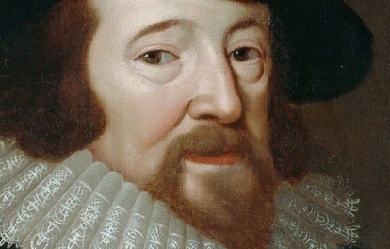
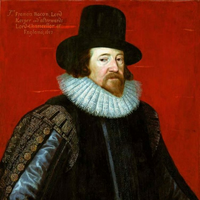
Francis Bacon, 1st Viscount St Alban, PC KC (/ˈbeɪkən/; 22 January 1561– 9 April 1626) was an English philosopher, statesman, scientist, jurist, orator, and author. He served both as Attorney General and as Lord Chancellor of England. After his death, he remained extremely influential through his works, especially as philosophical advocate and practitioner of the scientific method during the scientific revolution. Bacon has been called the father of empiricism. His works argued for the possibility of scientific knowledge based only upon inductive and careful observation of events in nature. Most importantly, he argued this could be achieved by use of a skeptical and methodical approach whereby scientists aim to avoid misleading themselves. While his own practical ideas about such a method, the Baconian method, did not have a long lasting influence, the general idea of the importance and possibility of a skeptical methodology makes Bacon the father of scientific method. This marked a new turn in the rhetorical and theoretical framework for science, the practical details of which are still central in debates about science and methodology today. Bacon was generally neglected at court by Queen Elizabeth, but after the accession of King James I in 1603, Bacon was knighted. He was later created Baron Verulam in 1618 and Viscount St. Alban in 1621. Because he had no heirs, both titles became extinct upon his death in 1626, at 65 years of age. Bacon died of pneumonia, with one account by John Aubrey stating that he had contracted the condition while studying the effects of freezing on the preservation of meat. Biography Early life Francis Bacon was born on 22 January 1561 at York House near the Strand in London, the son of Sir Nicholas Bacon by his second wife, Anne (Cooke) Bacon, the daughter of the noted humanist Anthony Cooke. His mother’s sister was married to William Cecil, 1st Baron Burghley, making Burghley Bacon’s uncle. Biographers believe that Bacon was educated at home in his early years owing to poor health, which would plague him throughout his life. He received tuition from John Walsall, a graduate of Oxford with a strong leaning toward Puritanism. He entered Trinity College, Cambridge, on 5 April 1573 at the age of 12, living for three years there, together with his older brother Anthony Bacon under the personal tutelage of Dr John Whitgift, future Archbishop of Canterbury. Bacon’s education was conducted largely in Latin and followed the medieval curriculum. He was also educated at the University of Poitiers. It was at Cambridge that he first met Queen Elizabeth, who was impressed by his precocious intellect, and was accustomed to calling him “The young lord keeper”. His studies brought him to the belief that the methods and results of science as then practised were erroneous. His reverence for Aristotle conflicted with his rejection of Aristotelian philosophy, which seemed to him barren, disputatious and wrong in its objectives. On 27 June 1576, he and Anthony entered de societate magistrorum at Gray’s Inn. A few months later, Francis went abroad with Sir Amias Paulet, the English ambassador at Paris, while Anthony continued his studies at home. The state of government and society in France under Henry III afforded him valuable political instruction. For the next three years he visited Blois, Poitiers, Tours, Italy, and Spain. During his travels, Bacon studied language, statecraft, and civil law while performing routine diplomatic tasks. On at least one occasion he delivered diplomatic letters to England for Walsingham, Burghley, and Leicester, as well as for the queen. The sudden death of his father in February 1579 prompted Bacon to return to England. Sir Nicholas had laid up a considerable sum of money to purchase an estate for his youngest son, but he died before doing so, and Francis was left with only a fifth of that money. Having borrowed money, Bacon got into debt. To support himself, he took up his residence in law at Gray’s Inn in 1579, his income being supplemented by a grant from his mother Lady Anne of the manor of Marks near Romford in Essex, which generated a rent of £46. Parliamentarian Bacon stated that he had three goals: to uncover truth, to serve his country, and to serve his church. He sought to further these ends by seeking a prestigious post. In 1580, through his uncle, Lord Burghley, he applied for a post at court that might enable him to pursue a life of learning, but his application failed. For two years he worked quietly at Gray’s Inn, until he was admitted as an outer barrister in 1582. His parliamentary career began when he was elected MP for Bossiney, Cornwall, in a by-election (similar to a special election in the US) in 1581. In 1584 he took his seat in parliament for Melcombe in Dorset, and in 1586 for Taunton. At this time, he began to write on the condition of parties in the church, as well as on the topic of philosophical reform in the lost tract Temporis Partus Maximus. Yet he failed to gain a position that he thought would lead him to success. He showed signs of sympathy to Puritanism, attending the sermons of the Puritan chaplain of Gray’s Inn and accompanying his mother to the Temple Church to hear Walter Travers. This led to the publication of his earliest surviving tract, which criticised the English church’s suppression of the Puritan clergy. In the Parliament of 1586, he openly urged execution for the Catholic Mary, Queen of Scots. About this time, he again approached his powerful uncle for help; this move was followed by his rapid progress at the bar. He became a bencher in 1586 and was elected a Reader in 1587, delivering his first set of lectures in Lent the following year. In 1589, he received the valuable appointment of reversion to the Clerkship of the Star Chamber, although he did not formally take office until 1608; the post was worth £1,600 a year. In 1588 he became MP for Liverpool and then for Middlesex in 1593. He later sat three times for Ipswich (1597, 1601, 1604) and once for Cambridge University (1614). He became known as a liberal-minded reformer, eager to amend and simplify the law. Though a friend of the crown, he opposed feudal privileges and dictatorial powers. He spoke against religious persecution. He struck at the House of Lords in its usurpation of the Money Bills. He advocated for the union of England and Scotland, which made him a significant influence toward the consolidation of the United Kingdom; and he later would advocate for the integration of Ireland into the Union. Closer constitutional ties, he believed, would bring greater peace and strength to these countries. Attorney General Bacon soon became acquainted with Robert Devereux, 2nd Earl of Essex, Queen Elizabeth’s favourite. By 1591 he acted as the earl’s confidential adviser. In 1592 he was commissioned to write a tract in response to the Jesuit Robert Parson’s anti-government polemic, which he titled Certain observations made upon a libel, identifying England with the ideals of democratic Athens against the belligerence of Spain. Bacon took his third parliamentary seat for Middlesex when in February 1593 Elizabeth summoned Parliament to investigate a Roman Catholic plot against her. Bacon’s opposition to a bill that would levy triple subsidies in half the usual time offended the Queen: opponents accused him of seeking popularity, and for a time the Court excluded him from favour. When the office of Attorney General fell vacant in 1594, Lord Essex’s influence was not enough to secure the position for Bacon and it was given to Sir Edward Coke. Likewise, Bacon failed to secure the lesser office of Solicitor General in 1595, the Queen pointedly snubbing him by appointing Sir Thomas Fleming instead. To console him for these disappointments, Essex presented him with a property at Twickenham, which Bacon subsequently sold for £1,800. In 1596 Bacon became Queen’s Counsel, but missed the appointment of Master of the Rolls. During the next few years, his financial situation remained embarrassing. His friends could find no public office for him, and a scheme for retrieving his position by a marriage with the wealthy and young widow Lady Elizabeth Hatton failed after she broke off their relationship upon accepting marriage to Sir Edward Coke, a further spark of enmity between the men. In 1598 Bacon was arrested for debt. Afterward, however, his standing in the Queen’s eyes improved. Gradually, Bacon earned the standing of one of the learned counsels, though he had no commission or warrant, and received no salary. His relationship with the Queen further improved when he severed ties with Essex—a shrewd move, as Essex would be executed for treason in 1601. With others, Bacon was appointed to investigate the charges against Essex. A number of Essex’s followers confessed that Essex had planned a rebellion against the Queen. Bacon was subsequently a part of the legal team headed by the Attorney General Sir Edward Coke at Essex’s treason trial. After the execution, the Queen ordered Bacon to write the official government account of the trial, which was later published as A DECLARATION of the Practices and Treasons attempted and committed by Robert late Earle of Essex and his Complices, against her Majestie and her Kingdoms... after Bacon’s first draft was heavily edited by the Queen and her ministers. According to his personal secretary and chaplain, William Rawley, as a judge Bacon was always tender-hearted, “looking upon the examples with the eye of severity, but upon the person with the eye of pity and compassion”. And also that “he was free from malice”, “no revenger of injuries”, and “no defamer of any man”. James I comes to the throne The succession of James I brought Bacon into greater favour. He was knighted in 1603. In another shrewd move, Bacon wrote his Apologies in defence of his proceedings in the case of Essex, as Essex had favoured James to succeed to the throne. The following year, during the course of the uneventful first parliament session, Bacon married Alice Barnham. In June 1607 he was at last rewarded with the office of solicitor general. The following year, he began working as the Clerkship of the Star Chamber. Despite a generous income, old debts still could not be paid. He sought further promotion and wealth by supporting King James and his arbitrary policies. In 1610 the fourth session of James’s first parliament met. Despite Bacon’s advice to him, James and the Commons found themselves at odds over royal prerogatives and the king’s embarrassing extravagance. The House was finally dissolved in February 1611. Throughout this period Bacon managed to stay in the favour of the king while retaining the confidence of the Commons. In 1613 Bacon was finally appointed attorney general, after advising the king to shuffle judicial appointments. As attorney general, Bacon, by his zealous efforts—which included torture—to obtain the conviction of Edmund Peacham for treason, raised legal controversies of high constitutional importance; and successfully prosecuted Robert Carr, 1st Earl of Somerset, and his wife, Frances Howard, Countess of Somerset, for murder in 1616. The so-called Prince’s Parliament of April 1614 objected to Bacon’s presence in the seat for Cambridge and to the various royal plans that Bacon had supported. Although he was allowed to stay, parliament passed a law that forbade the attorney general to sit in parliament. His influence over the king had evidently inspired resentment or apprehension in many of his peers. Bacon, however, continued to receive the King’s favour, which led to his appointment in March 1617 as temporary Regent of England (for a period of a month), and in 1618 as Lord Chancellor. On 12 July 1618 the king created Bacon Baron Verulam, of Verulam, in the Peerage of England; he then became known as Francis, Lord Verulam. Bacon continued to use his influence with the king to mediate between the throne and Parliament, and in this capacity he was further elevated in the same peerage, as Viscount St Alban, on 27 January 1621. Lord Chancellor and public disgrace Bacon’s public career ended in disgrace in 1621. After he fell into debt, a parliamentary committee on the administration of the law charged him with 23 separate counts of corruption. His lifelong enemy, Sir Edward Coke, who had instigated these accusations, was one of those appointed to prepare the charges against the chancellor. To the lords, who sent a committee to enquire whether a confession was really his, he replied, “My lords, it is my act, my hand, and my heart; I beseech your lordships to be merciful to a broken reed.” He was sentenced to a fine of £40,000 and committed to the Tower of London at the king’s pleasure; the imprisonment lasted only a few days and the fine was remitted by the king. More seriously, parliament declared Bacon incapable of holding future office or sitting in parliament. He narrowly escaped undergoing degradation, which would have stripped him of his titles of nobility. Subsequently, the disgraced viscount devoted himself to study and writing. There seems little doubt that Bacon had accepted gifts from litigants, but this was an accepted custom of the time and not necessarily evidence of deeply corrupt behaviour. While acknowledging that his conduct had been lax, he countered that he had never allowed gifts to influence his judgement and, indeed, he had on occasion given a verdict against those who had paid him. He even had an interview with King James in which he assured: The law of nature teaches me to speak in my own defence: With respect to this charge of bribery I am as innocent as any man born on St. Innocents Day. I never had a bribe or reward in my eye or thought when pronouncing judgment or order... I am ready to make an oblation of myself to the King He also wrote the following to Buckingham: My mind is calm, for my fortune is not my felicity. I know I have clean hands and a clean heart, and I hope a clean house for friends or servants; but Job himself, or whoever was the justest judge, by such hunting for matters against him as hath been used against me, may for a time seem foul, especially in a time when greatness is the mark and accusation is the game. The true reason for his acknowledgement of guilt is the subject of debate, but some authors speculate that it may have been prompted by his sickness, or by a view that through his fame and the greatness of his office he would be spared harsh punishment. He may even have been blackmailed, with a threat to charge him with sodomy, into confession. The British jurist Basil Montagu wrote in Bacon’s defence, concerning the episode of his public disgrace: Bacon has been accused of servility, of dissimulation, of various base motives, and their filthy brood of base actions, all unworthy of his high birth, and incompatible with his great wisdom, and the estimation in which he was held by the noblest spirits of the age. It is true that there were men in his own time, and will be men in all times, who are better pleased to count spots in the sun than to rejoice in its glorious brightness. Such men have openly libelled him, like Dewes and Weldon, whose falsehoods were detected as soon as uttered, or have fastened upon certain ceremonious compliments and dedications, the fashion of his day, as a sample of his servility, passing over his noble letters to the Queen, his lofty contempt for the Lord Keeper Puckering, his open dealing with Sir Robert Cecil, and with others, who, powerful when he was nothing, might have blighted his opening fortunes for ever, forgetting his advocacy of the rights of the people in the face of the court, and the true and honest counsels, always given by him, in times of great difficulty, both to Elizabeth and her successor. When was a “base sycophant” loved and honoured by piety such as that of Herbert, Tennison, and Rawley, by noble spirits like Hobbes, Ben Jonson, and Selden, or followed to the grave, and beyond it, with devoted affection such as that of Sir Thomas Meautys. Personal life When he was 36, Bacon courted Elizabeth Hatton, a young widow of 20. Reportedly, she broke off their relationship upon accepting marriage to a wealthier man, Bacon’s rival, Edward Coke. Years later, Bacon still wrote of his regret that the marriage to Hatton had not taken place. At the age of 45, Bacon married Alice Barnham, the 14-year-old daughter of a well-connected London alderman and MP. Bacon wrote two sonnets proclaiming his love for Alice. The first was written during his courtship and the second on his wedding day, 10 May 1606. When Bacon was appointed lord chancellor, “by special Warrant of the King”, Lady Bacon was given precedence over all other Court ladies. Reports of increasing friction in his marriage to Alice appeared, with speculation that some of this may have been due to financial resources not being as readily available to her as she had been accustomed to. Alice was reportedly interested in fame and fortune, and when reserves of money were no longer available there were complaints about where all the money was going. Alice Chambers Bunten wrote in her Life of Alice Barnham that, upon their descent into debt, she actually went on trips to ask for financial favours and assistance from their circle of friends. Bacon disinherited her upon discovering her secret romantic relationship with Sir John Underhill. He rewrote his will, which had previously been very generous—leaving her lands, goods, and income—revoking it all. Bacon’s personal secretary and chaplain, William Rawley, however, wrote in his biography of Bacon that his marriage was one of “much conjugal love and respect”, mentioning a robe of honour that he gave to Alice and which “she wore unto her dying day, being twenty years and more after his death”. The well-connected antiquary John Aubrey noted in his Brief Lives concerning Bacon, “He was a Pederast. His Ganimeds and Favourites tooke Bribes”, biographers continue to debate Bacon’s sexual inclinations and the precise nature of his personal relationships. Some authors believe that despite his marriage, Bacon was primarily attracted to men. Forker, for example, has explored the “historically documentable sexual preferences” of both King James and Bacon, and concluded they were all oriented to “masculine love”, a contemporary term that “seems to have been used exclusively to refer to the sexual preference of men for members of their own gender.” The Jacobean antiquarian Sir Simonds D’Ewes implied there had been a question of bringing him to trial for buggery, which his brother Anthony Bacon had also been charged with. This conclusion has been disputed by others, who point to lack of consistent evidence, and consider the sources to be more open to interpretation. In his “New Atlantis”, Bacon describes his utopian island as being “the chastest nation under heaven”, in which there was no prostitution or adultery, and further saying that “as for masculine love, they have no touch of it”. Death On 9 April 1626, Bacon died of pneumonia while at Arundel mansion at Highgate outside London. An influential account of the circumstances of his death was given by John Aubrey’s Brief Lives, with Aubrey stating he contracted pneumonia while studying the effects of freezing on the preservation of meat. Aubrey has been criticised for his evident credulousness in this and other works; on the other hand, he knew Thomas Hobbes, Bacon’s fellow-philosopher and friend. Aubrey’s vivid account, which portrays Bacon as a martyr to experimental scientific method, had him journeying to Highgate through the snow with the King’s physician when he is suddenly inspired by the possibility of using the snow to preserve meat: “They were resolved they would try the experiment presently. They alighted out of the coach and went into a poor woman’s house at the bottom of Highgate hill, and bought a fowl, and made the woman exenterate it.” After stuffing the fowl with snow, Bacon contracted a fatal case of pneumonia. Some people, including Aubrey, consider these two contiguous, possibly coincidental events as related and causative of his death: "The Snow so chilled him that he immediately fell so extremely ill, that he could not return to his Lodging... but went to the Earle of Arundel’s house at Highgate, where they put him into... a damp bed that had not been layn-in... which gave him such a cold that in 2 or 3 days as I remember Mr Hobbes told me, he died of Suffocation.” Being unwittingly on his deathbed, the philosopher wrote his last letter to his absent host and friend Lord Arundel: My very good Lord,—I was likely to have had the fortune of Caius Plinius the elder, who lost his life by trying an experiment about the burning of Mount Vesuvius; for I was also desirous to try an experiment or two touching the conservation and induration of bodies. As for the experiment itself, it succeeded excellently well; but in the journey between London and Highgate, I was taken with such a fit of casting as I know not whether it were the Stone, or some surfeit or cold, or indeed a touch of them all three. But when I came to your Lordship’s House, I was not able to go back, and therefore was forced to take up my lodging here, where your housekeeper is very careful and diligent about me, which I assure myself your Lordship will not only pardon towards him, but think the better of him for it. For indeed your Lordship’s House was happy to me, and I kiss your noble hands for the welcome which I am sure you give me to it. I know how unfit it is for me to write with any other hand than mine own, but by my troth my fingers are so disjointed with sickness that I cannot steadily hold a pen. Another account appears in a biography by William Rawley, Bacon’s personal secretary and chaplain: He died on the ninth day of April in the year 1626, in the early morning of the day then celebrated for our Saviour’s resurrection, in the sixty-sixth year of his age, at the Earl of Arundel’s house in Highgate, near London, to which place he casually repaired about a week before; God so ordaining that he should die there of a gentle fever, accidentally accompanied with a great cold, whereby the defluxion of rheum fell so plentifully upon his breast, that he died by suffocation. At the news of his death, over 30 great minds collected together their eulogies of him, which were then later published in Latin. He left personal assets of about £7,000 and lands that realised £6,000 when sold. His debts amounted to more than £23,000, equivalent to more than £3m at current value. Philosophy and works Francis Bacon’s philosophy is displayed in the vast and varied writings he left, which might be divided into three great branches: Scientific works– in which his ideas for an universal reform of knowledge into scientific methodology and the improvement of mankind’s state using the Scientific method are presented. Religious and literary works– in which he presents his moral philosophy and theological meditations. Juridical works– in which his reforms in English Law are proposed. Influence Science Bacon’s seminal work Novum Organum was influential in the 1630s and 1650s among scholars, in particular Sir Thomas Browne, who in his encyclopaedia Pseudodoxia Epidemica (1646–72) frequently adheres to a Baconian approach to his scientific enquiries. During the Restoration, Bacon was commonly invoked as a guiding spirit of the Royal Society founded under Charles II in 1660. During the 18th-century French Enlightenment, Bacon’s non-metaphysical approach to science became more influential than the dualism of his French contemporary Descartes, and was associated with criticism of the ancien regime. In 1733 Voltaire introduced him to a French audience as the “father” of the scientific method, an understanding which had become widespread by the 1750s. In the 19th century his emphasis on induction was revived and developed by William Whewell, among others. He has been reputed as the “Father of Experimental Philosophy”. He also wrote a long treatise on Medicine, History of Life and Death, with natural and experimental observations for the prolongation of life. One of his biographers, the historian William Hepworth Dixon, states: “Bacon’s influence in the modern world is so great that every man who rides in a train, sends a telegram, follows a steam plough, sits in an easy chair, crosses the channel or the Atlantic, eats a good dinner, enjoys a beautiful garden, or undergoes a painless surgical operation, owes him something.” In 1902 Hugo von Hofmannsthal published a fictional letter addressed to Bacon and dated 1603, about a writer who is experiencing a crisis of language. Known as The Lord Chandos Letter, it has been proposed that Bacon was identified as its recipient as having laid the foundation for the work of scientists such as Ernst Mach, notable both for his academic distinction in the history and philosophy of the inductive sciences, and for his own contributions to physics. North America Bacon played a leading role in establishing the British colonies in North America, especially in Virginia, the Carolinas and Newfoundland in northeastern Canada. His government report on “The Virginia Colony” was submitted in 1609. In 1610 Bacon and his associates received a charter from the king to form the Tresurer and the Companye of Adventurers and planter of the Cittye of London and Bristoll for the Collonye or plantacon in Newfoundland, and sent John Guy to found a colony there. Thomas Jefferson, the third President of the United States, wrote: “Bacon, Locke and Newton. I consider them as the three greatest men that have ever lived, without any exception, and as having laid the foundation of those superstructures which have been raised in the Physical and Moral sciences”. In 1910 Newfoundland issued a postage stamp to commemorate Bacon’s role in establishing the colony. The stamp describes Bacon as "the guiding spirit in Colonization Schemes in 1610". Moreover, some scholars believe he was largely responsible for the drafting, in 1609 and 1612, of two charters of government for the Virginia Colony. William Hepworth Dixon considered that Bacon’s name could be included in the list of Founders of the United States. Law Although few of his proposals for law reform were adopted during his lifetime, his legal legacy was considered by the magazine New Scientist in 1961 as having influenced the drafting of the Napoleonic Code as well as the law reforms introduced by 19th-century British Prime Minister Sir Robert Peel. The historian William Hepworth Dixon had referred to the Napoleonic Code as “the sole embodiment of Bacon’s thought”, saying that Bacon’s legal work “has had more success abroad than it has found at home”, and that in France “it has blossomed and come into fruit”. Harvey Wheeler attributed to Bacon, in Francis Bacon’s Verulamium—the Common Law Template of The Modern in English Science and Culture, the creation of these distinguishing features of the modern common law system: using cases as repositories of evidence about the “unwritten law”; determining the relevance of precedents by exclusionary principles of evidence and logic; treating opposing legal briefs as adversarial hypotheses about the application of the “unwritten law” to a new set of facts. As late as the 18th century some juries still declared the law rather than the facts, but already before the end of the 17th century Sir Matthew Hale explained modern common law adjudication procedure and acknowledged Bacon as the inventor of the process of discovering unwritten laws from the evidences of their applications. The method combined empiricism and inductivism in a new way that was to imprint its signature on many of the distinctive features of modern English society. Paul H. Kocher writes that Bacon is considered by some jurists to be the father of modern Jurisprudence. Bacon is commemorated with a statue in Gray’s Inn, South Square in London where he received his legal training, and where he was elected Treasurer of the Inn in 1608. James McClellan, a political scientist from the University of Virginia, considered Bacon to have had “a great following” in the American colonies. More recent scholarship on Bacon’s jurisprudence has focused on his advocating torture as a legal recourse for the crown. Bacon himself was not a stranger to the torture chamber: in his various legal capacities in both Elizabeth I’s and James I’s reigns, Bacon was listed as a commissioner on five torture warrants. In 1613(?), in a letter addressed to King James I on the question of torture’s place within English law, Bacon identifies the scope of torture: a means to further the investigation of threats to the state: “In the cases of treasons, torture is used for discovery, and not for evidence.” For Bacon, torture was not a punitive measure, an intended form of state repression, but instead offered a modus operandi for the government agent tasked with uncovering acts of treason. Historical debates Bacon and Shakespeare The Baconian hypothesis of Shakespearean authorship, first proposed in the mid-19th century, contends that Francis Bacon wrote some or even all of the plays conventionally attributed to William Shakespeare. Occult hypotheses Francis Bacon often gathered with the men at Gray’s Inn to discuss politics and philosophy, and to try out various theatrical scenes that he admitted writing. Bacon’s alleged connection to the Rosicrucians and the Freemasons has been widely discussed by authors and scholars in many books. However, others, including Daphne du Maurier in her biography of Bacon, have argued that there is no substantive evidence to support claims of involvement with the Rosicrucians. Frances Yates does not make the claim that Bacon was a Rosicrucian, but presents evidence that he was nevertheless involved in some of the more closed intellectual movements of his day. She argues that Bacon’s movement for the advancement of learning was closely connected with the German Rosicrucian movement, while Bacon’s New Atlantis portrays a land ruled by Rosicrucians. He apparently saw his own movement for the advancement of learning to be in conformity with Rosicrucian ideals. The link between Bacon’s work and the Rosicrucians ideals which Yates allegedly found was the conformity of the purposes expressed by the Rosicrucian Manifestos and Bacon’s plan of a “Great Instauration”, for the two were calling for a reformation of both “divine and human understanding”, as well as both had in view the purpose of mankind’s return to the “state before the Fall”. Another major link is said to be the resemblance between Bacon’s New Atlantis and the German Rosicrucian Johann Valentin Andreae’s Description of the Republic of Christianopolis (1619). Andreae describes a utopic island in which Christian theosophy and applied science ruled, and in which the spiritual fulfillment and intellectual activity constituted the primary goals of each individual, the scientific pursuits being the highest intellectual calling—linked to the achievement of spiritual perfection. Andreae’s island also depicts a great advancement in technology, with many industries separated in different zones which supplied the population’s needs—which shows great resemblance to Bacon’s scientific methods and purposes. The Rosicrucian organisation AMORC claims that Bacon was the “Imperator” (leader) of the Rosicrucian Order in both England and the European continent, and would have directed it during his lifetime. Bacon’s influence can also be seen on a variety of religious and spiritual authors, and on groups that have utilised his writings in their own belief systems. Bibliography * Some of the more notable works by Bacon are: * Essays (1st edition 1597) * The Advancement and Proficience of Learning Divine and Human (1605) * Essays (2nd edition– 38 essays, 1612) * Novum Organum Scientiarum ('New Method’, 1620) * Essays, or Counsels Civil and Moral (3rd/final edition– 58 essays, 1625) * New Atlantis (1627) References Wikipedia—https://en.wikipedia.org/wiki/Francis_Bacon

I love to read and write. I am in 6th grade so I'm really very young. I've always loved to write and when I found this website I thought I could let my inner feelings show a little more. Facts About Myself: -I like anime. (Hetalia specifically.) -I love the colors Royal Blue and Lavender. -I'm more of a back-crowd person as I put it. -I come off as very intimidating for my age so I don't have many friends. -I do ballet and soccer. That's all I'm giving out about myself so goodbye!!! ~^_^~
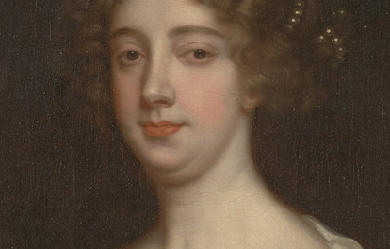

Aphra Behn (14 December 1640? April 1689) was an English playwright, poet, translator and fiction writer from the Restoration era. As one of the first English women to earn her living by her writing, she broke cultural barriers and served as a literary role model for later generations of women authors. Rising from obscurity, she came to the notice of Charles II, who employed her as a spy in Antwerp. Upon her return to London and a probable brief stay in debtors’ prison, she began writing for the stage. She belonged to a coterie of poets and famous libertines such as John Wilmot, Lord Rochester. She wrote under the pastoral pseudonym Astrea. During the turbulent political times of the Exclusion Crisis, she wrote an epilogue and prologue that brought her into legal trouble; she thereafter devoted most of her writing to prose genres and translations. A staunch supporter of the Stuart line, she declined an invitation from Bishop Burnet to write a welcoming poem to the new king William III. She died shortly after.She is remembered in Virginia Woolf’s A Room of One’s Own: “All women together ought to let flowers fall upon the tomb of Aphra Behn which is, most scandalously but rather appropriately, in Westminster Abbey, for it was she who earned them the right to speak their minds.” Her grave is not included in the Poets’ Corner but lies in the East Cloister near the steps to the church. Life and work Versions of her early life Information regarding Behn’s life is scant, especially regarding her early years. This may be due to intentional obscuring on Behn’s part. One version of Behn’s life tells that she was born to a barber named John Amis and his wife Amy. Another story has Behn born to a couple named Cooper. The Histories And Novels of the Late Ingenious Mrs. Behn (1696) states that Behn was born to Bartholomew Johnson, a barber, and Elizabeth Denham, a wet-nurse. Colonel Thomas Colepeper, the only person who claimed to have known her as a child, wrote in Adversaria that she was born at “Sturry or Canterbury” to a Mr Johnson and that she had a sister named Frances. Another contemporary, Anne Finch, wrote that Behn was born in Wye in Kent, the “Daughter to a Barber”. In some accounts the profile of her father fits Eaffrey Johnson.Behn was born during the buildup of the English Civil War, a child of the political tensions of the time. One version of Behn’s story has her travelling with a Bartholomew Johnson to Surinam. He was said to die on the journey, with his wife and children spending some months in the country, though there is no evidence of this. During this trip Behn said she met an African slave leader, whose story formed the basis for one of her most famous works, Oroonoko. It is possible that she acted a spy in the colony. There is little verifiable evidence to confirm any one story. In Oroonoko Behn gives herself the position of narrator and her first biographer accepted the assumption that Behn was the daughter of the lieutenant general of Surinam, as in the story. There is little evidence that this was the case, and none of her contemporaries acknowledge any aristocratic status. There is also no evidence that Oroonoko existed as an actual person or that any such slave revolt, as is featured in the story, really happened. Writer Germaine Greer has called Behn “a palimpsest; she has scratched herself out,” and biographer Janet Todd noted that Behn “has a lethal combination of obscurity, secrecy and staginess which makes her an uneasy fit for any narrative, speculative or factual. She is not so much a woman to be unmasked as an unending combination of masks”. It is notable that her name is not mentioned in tax or church records. During her lifetime she was also known as Ann Behn, Mrs Bean, agent 160 and Astrea. Career Shortly after her supposed return to England from Surinam in 1664, Behn may have married Johan Behn (also written as Johann and John Behn). He may have been a merchant of German or Dutch extraction, possibly from Hamburg. He died or the couple separated soon after 1664, however from this point the writer used “Mrs Behn” as her professional name.Behn may have had a Catholic upbringing. She once commented that she was “designed for a nun,” and the fact that she had so many Catholic connections, such as Henry Neville who was later arrested for his Catholicism, would have aroused suspicions during the anti-Catholic fervour of the 1680s. She was a monarchist, and her sympathy for the Stuarts, and particularly for the Catholic Duke of York may be demonstrated by her dedication of her play The Rover II to him after he had been exiled for the second time. Behn was dedicated to the restored King Charles II. As political parties emerged during this time, Behn became a Tory supporter.By 1666 Behn had become attached to the court, possibly through the influence of Thomas Culpeper and other associates. The Second Anglo-Dutch War had broken out between England and the Netherlands in 1665, and she was recruited as a political spy in Antwerp on behalf of King Charles II, possibly under the auspices of courtier Thomas Killigrew. This is the first well-documented account we have of her activities. Her code name is said to have been Astrea, a name under which she later published many of her writings. Her chief role was to establish an intimacy with William Scot, son of Thomas Scot, a regicide who had been executed in 1660. Scot was believed to be ready to become a spy in the English service and to report on the doings of the English exiles who were plotting against the King. Behn arrived in Bruges in July 1666, probably with two others, as London was wracked with plague and fire. Behn’s job was to turn Scot into a double agent, but there is evidence that Scot betrayed her to the Dutch.Behn’s exploits were not profitable however; the cost of living shocked her, and she was left unprepared. One month after arrival, she pawned her jewellry. King Charles was slow in paying (if he paid at all), either for her services or for her expenses whilst abroad. Money had to be borrowed so that Behn could return to London, where a year’s petitioning of Charles for payment was unsuccessful. It may be that she was never paid by the crown. A warrant was issued for her arrest, but there is no evidence it was served or that she went to prison for her debt, though apocryphally it is often given as part of her history. Forced by debt and her husband’s death, Behn began to work for the King’s Company and the Duke’s Company players as a scribe. She had, however, written poetry up until this point. While she is recorded to have written before she adopted her debt, John Palmer said in a review of her works that, “Mrs. Behn wrote for a livelihood. Playwriting was her refuge from starvation and a debtor’s prison.” The theatres that had been closed under Cromwell were now re-opening under Charles II, plays enjoying a revival. Her first play, The Forc’d Marriage, was staged in 1670, followed by The Amorous Prince (1671). After her third play, The Dutch Lover, failed, Behn falls off the public record for three years. It is speculated that she went travelling again, possibly in her capacity as a spy. She gradually moved towards comic works, which proved more commercially successful. Her most popular works included The Rover. Behn became friends with notable writers of the day, including John Dryden, Elizabeth Barry, John Hoyle, Thomas Otway and Edward Ravenscroft, and was acknowledged as a part of the circle of the Earl of Rochester. Behn often used her writings to attack the parliamentary Whigs claiming, “In public spirits call’d, good o’ th’ Commonwealth... So tho’ by different ways the fever seize... in all ’tis one and the same mad disease.” This was Behn’s reproach to parliament which had denied the king funds. Final years and death In 1688, in the year before her death, she published A Discovery of New Worlds, a translation of a French popularisation of astronomy, Entretiens sur la pluralité des mondes, by Bernard le Bovier de Fontenelle, written as a novel in a form similar to her own work, but with her new, religiously oriented preface. In all she would write and stage 19 plays, contribute to more, and become one of the first prolific, high-profile female dramatists in Britain. During the 1670s and 1680s she was one of the most productive playwrights in Britain, second only to Poet Laureate John Dryden.In her last four years, Behn’s health began to fail, beset by poverty and debt, but she continued to write ferociously, though it became increasingly hard for her to hold a pen. In her final days, she wrote the translation of the final book of Abraham Cowley’s Six Books of Plants. She died on 16 April 1689, and was buried in the East Cloister Westminster Abbey. The inscription on her tombstone reads: “Here lies a Proof that Wit can never be Defence enough against Mortality.” She was quoted as stating that she had led a “life dedicated to pleasure and poetry.” Published works Behn earned a living writing, one of the earliest Englishwoman to do so. After John Dryden she was the most prolific writer of the English Restoration. Behn was not the first woman in England to publish a play. In 1613 Lady Elizabeth Cary had published The Tragedy of Miriam, in the 1650s Margaret Cavendish published two volumes of plays, and in 1663 a translation of Corneille’s Pompey by Katherine Philips was performed in Dublin and London. Women had been excluded from theatre in the Elizabethan era, but in Restoration England they made up a significant part of the audience and professional actresses played the women’s parts. This changed the nature and themes of Restoration theatre.Behn’s first play The Forc’d Marriage was a romantic tragicomedy on arranged marriages and was staged by the Duke’s Company in September 1670. The performance ran for six nights, which was regarded as a good run for an unknown author. Six months later Behn’s play The Amorous Prince was successfully staged. Again, Behn used the play to comment on the harmful effects of arranged marriages. Behn did not hide the fact that she was a woman, instead she made a point of it. When in 1673 the Dorset Garden Theatre staged The Dutch Lover, critics sabotaged the play on the grounds that the author was a woman. Behn tackled the critics head on in Epistle to the Reader. She argued that women had been held back by their unjust exclusion from education, not their lack of ability. After a three-year publication pause, Behn published four plays in close succession. In 1676 she published Abdelazar, The Town Fop and The Rover. In early 1678 Sir Patient Fancy was published. This succession of box-office successes led to frequent attacks on Behn. She was attacked for her private life, the morality of her plays was questioned and she was accused of plagiarising The Rover. Behn countered these public attacks in the prefaces of her published plays. In the preface to Sir Patient Fancy she argued that she was being singled out because she was a woman, while male playwrights were free to live the most scandalous lives and write bawdy plays.Under Charles II of England prevailing Puritan ethics was reversed in the fashionable society of London. The King associated with playwrights that poured scorn on marriage and the idea of consistency in love. Among the King’s favourite was the Earl of Rochester John Wilmot, who became famous for his cynical libertinism. Behn was a friend of Wilmot and Behn became a bold proponent of sexual freedom for both women and men. Like her contemporary male libertines, she wrote freely about sex. In the infamous poem The Disappointment she wrote a comic account of male impotence from a woman’s perspective. Critics Lisa Zeitz and Peter Thoms contend that the poem “playfully and wittily questions conventional gender roles and the structures of oppression which they support”. In The Dutch Lover Behn forthrightly acknowledged female sexual desire. Critics of Behn were provided with ammunition because of her public liaison with John Hoyle, a bisexual lawyer who scandalised his contemporaries.By the late 1670s Behn was among the leading playwrights of England. Her plays were staged frequently and attended by the King. The Rover became a favourite at the King’s court. Behn became heavily involved in the political debate about the succession. Because Charles II had no heir a prolonged political crisis ensued. Mass hysteria commenced as in 1678 the rumoured Popish Plot suggested the King should be replaced with his Roman Catholic brother James. Political parties developed, the Whigs wanted to exclude James, while the Tories did not believe succession should be altered in any way. Charles II eventually dissolved the Cavalier Parliament and James II succeeded him in 1685. Behn supported the Tory position and in the two years between 1681 and 1682 produced five plays to discredit the Whigs. The London audience, mainly Tory sympathisers, attended the plays in large numbers. But Behn was arrested on the order of King Charles II when she used one of the plays to attack James Scott, Duke of Monmouth, the illegitimate son of the King.As audience numbers declined, theatres staged mainly old works to save costs. Nevertheless, Behn published The Luckey Chance in 1686. In response to the criticism levelled at they play she articulated a long and passionate defence of women writers. Her play The Emperor of the Moon was published and staged in 1687, it became one of her longest running plays. Behn stopped writing plays and turned to prose fiction. Today she is mostly known for the novels she wrote in the later part of her life. Her first novel was the three-part Love-Letters Between a Nobleman and His Sister, published between 1682 and 1687. The novels were inspired by a contemporary scandal, which saw Lord Grey elope with his sister-in-law Lady Henrietta Berkeley. At the time of publication Love Letters was very popular and went through more than 16 editions. Today Behn’s prose work is critically acknowledged as having been important to the development of the English novel. Following Behn’s death, new female dramatists such as Delarivier Manley, Mary Pix, Susanna Centlivre and Catherine Trotter acknowledged Behn as their most vital predecessor, who opened up public space for women writers.In 1688, less than a year before her death, Behn published Oroonoko: or, The Royal Oroonoko, the story of the enslaved Oroonoko and his love Imoinda. It was based on Behn’s travel to Surinam twenty years earlier. The novel became a great success. In 1696 it was adapted for the stage by Thomas Southerne and continuously performed throughout the 18th century. In 1745 the novel was translated into French, going through seven French editions. As abolitionism gathered pace in the late 18th century the novel was celebrated as the first anti-slavery novel. Legacy and re-evaluation After her death in 1689 Behn’s literary work was marginalised and dismissed outright. Until the mid-20th century Behn was repeatedly dismissed as morally depraved minor writer. In the 18th century her literary work was scandalised as lewd by Thomas Brown, William Wycherley, Richard Steele and John Duncombe. Alexander Pope penned the famous lines “The stage how loosely does Astrea tread, Who fairly puts all characters to bed!”. In the 19th century Mary Hays, Matilda Betham, Alexander Dyce, Jane Williams and Julia Kavanagh decided that Behn’s writings were unfit to read, because they were corrupt and deplorable. Among the few critics who believed that Behn was an important writer were Leigh Hunt, William Forsyth and William Henry Hudson.The life and times of Behn were recounted by a long line of biographers, among them Dyce, Edmund Gosse, Ernest Bernbaum, Montague Summers, Vita Sackville-West, Virginia Woolf, George Woodcock, William J. Cameron and Frederick Link.Of Behn’s considerable literary output only Oroonoko was seriously considered by literary scholars. The late 18th century the novel is regarded as one of the first abolitionist and humanitarian novel published in the English language. It is credited as precursor to Jean-Jaques Rousseau’s Discourses on Inequality. Since the 1970s Behn’s literary works have been re-evaluated by feminist critics and writers. Behn was rediscovered as a significant female writer by Maureen Duffy, Angeline Goreau, Ruth Perry, Hilda Lee Smith, Moira Ferguson, Jane Spencer, Dale Spender, Elaine Hobby and Janet Todd. This led to the reprinting of her works. The Rover was republished in 1967, Oroonoko was republished in 1973, Love Letters between a Nobleman and His Sisters was published again in 1987 and The Lucky Chance was reprinted in 1988. Montague Summers, an author of scholarly works on the English drama of the 17th century, published a six-volume collection of her work, in hopes of rehabilitating her reputation. Summers was fiercely passionate about the work of Behn and found himself incredibly devoted to the appreciation of 17th century literature. Felix Schelling wrote in The Cambridge History of English Literature, that she was “a very gifted woman, compelled to write for bread in an age in which literature... catered habitually to the lowest and most depraved of human inclinations,” and that, “Her success depended upon her ability to write like a man.” Edmund Gosse remarked that she was, “...the George Sand of the Restoration”.The criticism of Behn’s poetry focuses on the themes of gender, sexuality, femininity, pleasure, and love. A feminist critique tends to focus on Behn’s inclusion of female pleasure and sexuality in her poetry, which was a radical concept at the time she was writing. One critic, Alison Conway, views Behn as instrumental to the formation of modern thought around the female gender and sexuality: "Behn wrote about these subjects before the technologies of sexuality we now associate were in place, which is, in part, why she proves so hard to situate in the trajectories most familiar to us”. Virginia Woolf wrote, in A Room of One’s Own: All women together, ought to let flowers fall upon the grave of Aphra Behn... for it was she who earned them the right to speak their minds... Behn proved that money could be made by writing at the sacrifice, perhaps, of certain agreeable qualities; and so by degrees writing became not merely a sign of folly and a distracted mind but was of practical importance. Adaptations of Behn in Literature Behn’s life has been adapted for the stage in the 2014 play Empress of the Moon: The Lives of Aphra Behn by Chris Braak, and the 2015 play [exit Mrs Behn] or, The Leo Play by Christopher VanderArk. She is one of the characters in the 2010 play Or, by Liz Duffy Adams. Behn appears as a character in Daniel O’Mahony’s Newtons Sleep, in Phillip Jose Farmer’s The Magic Labyrinth and Gods of Riverworld, in Molly Brown’s Invitation to a Funeral (1999), and in Diana Norman’s The Vizard Mask. She is referred to in Patrick O’Brian’s novel Desolation Island.
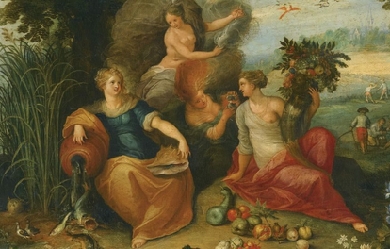
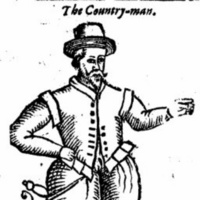
Nicholas Breton (also Britton or Brittaine) (1545–1626), English poet and novelist, belonged to an old family settled at Layer Breton, Essex. Life His father, William Breton, a London merchant who had made a considerable fortune, died in 1559, and the widow (née Elizabeth Bacon) married the poet George Gascoigne before her sons had attained their majority. Nicholas Breton was probably born at the “capitall mansion house” in Red Cross Street, in the parish of St Giles without Cripplegate, mentioned in his father’s will. There is no official record of his residence at the university, but the diary of the Rev. Richard Madox tells us that he was at Antwerp in 1583 and was “once of Oriel College.” He married Ann Sutton in 1593, and had a family. He is supposed to have died shortly after the publication of his last work, Fantastickes (1626). Breton found a patron in Mary, countess of Pembroke, and wrote much in her honour until 1601, when she seems to have withdrawn her favour. It is probably safe to supplement the meagre record of his life by accepting as autobiographical some of the letters signed N.B. in A Poste with a Packet of Mad Letters (1603, enlarged 1637); the 19th letter of the second part contains a general complaint of many griefs, and proceeds as follows: “Hath another been wounded in the warres, fared hard, lain in a cold bed many a bitter storme, and beene at many a hard banquet? all these have I; another imprisoned? so have I; another long been sicke? so have I; another plagued with an unquiet life? so have I; another indebted to his hearts griefe, and fame would pay and cannot? so am I.” Works * Breton was a prolific author of considerable versatility and gift, popular with his contemporaries, and forgotten by the next generation. His work consists of religious and pastoral poems, satires, and a number of miscellaneous prose tracts. His religious poems are sometimes wearisome by their excess of fluency and sweetness, but they are evidently the expression of a devout and earnest mind. His lyrics are pure and fresh, and his romances, though full of conceits, are pleasant reading, remarkably free from grossness. His praise of the Virgin and his references to Mary Magdalene have suggested that he was a Roman Catholic, but his prose writings abundantly prove that he was an ardent Anglican. * Breton had little gift for satire, and his best work is to be found in his pastoral poetry. His Passionate Shepheard (1604) is full of sunshine and fresh air, and of unaffected gaiety. The third pastoral in this book—"Who can live in heart so glad As the merrie country lad"—is well known; with some other of Breton’s daintiest poems, among them the lullaby, “Come little babe, come silly soule,” (This poem, however, comes from The Arbor of Amorous Devises, which is only in part Breton’s work.)—it is incorporated in A. H. Bullen’s Lyrics from Elizabethan Romances (1890). His keen observation of country life appears also in his prose idyll, Wits Trenckrnour, “a conference betwixt a scholler and an angler,” and in his Fantastickes, a series of short prose pictures of the months, the Christian festivals and the hours, which throw much light on the customs of the times. Most of Breton’s books are very rare and have great bibliographical value. His works, with the exception of some belonging to private owners, were collected by Dr AB Grosart in the Chertsey Worthies Library in 1879, with an elaborate introduction quoting the documents for the poet’s history. * Breton’s poetical works, the titles of which are here somewhat abbreviated, include: * The Workes of a Young Wit (1577) * A Floorish upon Fancie (1577) * The Pilgrimage to Paradise (1592), with a prefatory letter by John Case * The Countess of Penbrook’s Passion (manuscript), first printed by JO Halliwell-Phillipps in 1853 [1] * Pasquil’s Fooles cappe (entered at Stationers’ Hall in 1600) * Pasquil’s Mistresse (1600) * Pasquil’s Passe and Passeth Not (1600) * Melancholike Humours (1600) - reprinted by Scholartis Press London. 1929. * Marie Magdalen’s Love: a Solemne Passion of the Soules Love (1595), the first part of which, a prose treatise, is probably by another hand; the second part, a poem in six-lined stanza, is certainly by Breton * A Divine Poem, including “The Ravisht Soul” and “The Blessed Weeper” (1601) * An Excellent Poem, upon the Longing of a Blessed heart (1601) * The Soules Heavenly Exercise (1601) * The Soules Harmony (1602) * Olde Madcappe newe Gaily mawfrey (1602) * The Mother’s Blessing (1602) * A True Description of Unthankfulnesse (1602) * The Passionate Shepheard (1604) * The Souies Immortail Crowne (1605) * The Honour of Valour (1605) * An Invective against Treason; I would and I would not (1614) * Bryton’s Bowre of Delights (1591), edited by Dr Grosart in 1893, an unauthorized publication which contained some poems disclaimed by Breton * The Arbor of Amorous Devises (entered at Stationers’ Hall, 1594), only in part Breton’s * contributions to England’s Helicon and other miscellanies of verse. * Of his twenty-two prose tracts may be mentioned Wit’s Trenchmour (1597), The Wil of Wit (1599), A Poste with a Packet of Mad Letters (1602-6). Sir Philip Sidney’s Ourania by N. B. (1606), A Mad World, my Masters, Adventures of Two Excellent Princes, Grimello’s Fortunes (1603), Strange News out of Divers Countries (1622), etc.; Mary Magdalen’s Lamentations (1604), and The Passion of a Discontented Mind (1601), are sometimes, but erroneously, ascribed to Breton. Footnotes References Wikipedia—https://en.wikipedia.org/wiki/Nicholas_Breton
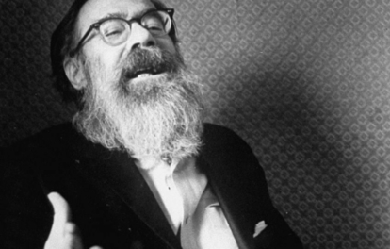
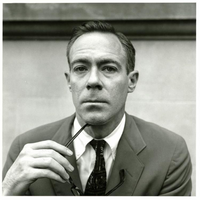
John Allyn Berryman (October 25, 1914– January 7, 1972) was an American poet and scholar, born in McAlester, Oklahoma. He was a major figure in American poetry in the second half of the 20th century and was considered a key figure in the Confessional school of poetry. His best-known work is The Dream Songs. Life and career John Berryman was born John Allyn Smith, Jr. in Oklahoma where he was raised until the age of ten, when his father, John Smith, a banker, and his mother, Martha (also known as Peggy), a schoolteacher, moved to Tampa, Florida. In 1926, in Florida, when the poet was eleven years old, his father shot and killed himself, Berryman was haunted by his father’s death for the rest of his life and would later write about his struggle to come to terms with it in his book The Dream Songs. In "Dream Song #143", he wrote, "That mad drive [to commit suicide] wiped out my childhood. I put him down/while all the same on forty years I love him/stashed in Oklahoma/besides his brother Will". In "Dream Song #145", he also wrote the following lines about his father: he only, very early in the morning, rose with his gun and went outdoors by my window and did what was needed. I cannot read that wretched mind, so strong & so undone. I've always tried. I–I'm trying to forgive whose frantic passage, when he could not live an instant longer,in the summer dawn left Henry to live on. Similarly, in Dream Song #384, Berryman wrote: The marker slants, flowerless, day's almost done, I stand above my father's grave with rage, often, often before I've made this awful pilgrimage to one who cannot visit me, who tore his page out: I come back for more, I spit upon this dreadful bankers grave who shot his heart out in a Florida dawn After his father’s death at the rear entrance to Kipling Arms, where the Smiths rented an apartment, the poet’s mother, within months, married John Angus McAlpin Berryman in New York City. The poet was renamed John Allyn McAlpin Berryman. Berryman’s mother also changed her first name from Peggy to Jill. Although his stepfather would later divorce his mother, Berryman and his stepfather stayed on good terms. With both his mother and stepfather working, his mother decided to send him away to the South Kent School, a private boarding school in Connecticut. Then Berryman went on to college at Columbia College where he was president of the Philolexian Society, joined the Boar’s Head Society, edited the Columbia Review, and studied under the literary scholar and poet Mark Van Doren. Berryman would later credit Van Doren with sparking his interest in writing poetry seriously. For two years, Berryman also studied overseas at Clare College, Cambridge, on a Kellett Fellowship, awarded by Columbia. He graduated in 1936. Regarding Berryman’s earliest success in poetry, the Norton Anthology of Modern Poetry editors note that "Berryman’s early work formed part of a volume entitled Five Young American Poets, published by New Directions in 1940". One of the other young poets included in the book was Randall Jarrell. Berryman would soon publish some of this early verse in his first book, also with New Directions Publishing, simply titled Poems, in 1942. However, his first mature collection of poems, The Dispossessed, appeared six years later, published by William Sloane Associates. The book received largely negative reviews from poets like Randall Jarrell who wrote, in The Nation, that Berryman was "a complicated, nervous, and intelligent [poet]" whose poetry in The Dispossessed was too derivative of W. B. Yeats. Berryman would later concur with this assessment of his early work, stating, “I didn’t want to be like Yeats; I wanted to be Yeats.” In October 1942, Berryman married Eileen Mulligan (later Simpson) in a ceremony at St. Patrick’s Catherdral, with poet Mark Van Doren as his best man. The pair moved to Beacon Hill, where Berryman lectured at Harvard. The marriage ended in 1953 (a divorce was formalized in 1956), when Simpson finally grew weary of tolerating Berryman’s affairs and acting as “net-holder” throughout his self-destructive personal crises. Simpson would memorialize her time with Berryman and his circle in her 1982 book Poets in Their Youth. In 1947, Berryman started an affair with a married woman named Chris, documented in a long sonnet sequence that he refrained from publishing, in part, because publication of the sonnets would have revealed the affair to his wife. However, he did eventually decide to publish the work, titled Berryman’s Sonnets, in 1967. The work included over one hundred sonnets. In 1950, Berryman published a biography of the fiction writer and poet Stephen Crane whom he greatly admired becoming, “the only biography by a leading American poet of the great American writer, Stephen Crane.” This book was followed by his next significant poem, Homage to Mistress Bradstreet (1956), which featured illustrations by the artist Ben Shahn and was Berryman’s first poem to receive “national attention” and a positive response from critics. Edmund Wilson wrote that it was “the most distinguished long poem by an American since T. S. Eliot’s The Waste Land.” When “Homage to Mistress Bradstreet and Other Poems” was published in 1959, the poet Conrad Aiken praised the shorter poems in the book which he thought were actually better than “Homage to Mistress Bradstreet”. Despite the relative success of his third book of verse, Berryman’s great poetic breakthrough occurred after he published 77 Dream Songs in 1964. It won the 1965 Pulitzer Prize for poetry and solidified Berryman’s standing as one of the most important poets of the post-World War II generation that included Robert Lowell, Elizabeth Bishop, and Delmore Schwartz. Soon afterwards, Berryman started receiving a great deal of national attention from the press, from arts organizations, and even from the White House which sent him an invitation to dine with President Lyndon B. Johnson (though Berryman had to decline because he was in Ireland at the time). Berryman was elected a Fellow of the American Academy of Arts and Sciences in 1967, and that same year Life magazine ran a feature story on him. Also, that year the newly created National Endowment for the Arts awarded him a ten thousand dollar grant (though he admitted, when asked about the award by a Minneapolis reporter, that he had never heard of the organization before). Berryman also continued to work on the “dream song” poems at a feverish pace and published a second, significantly longer, volume entitled His Toy, His Dream, His Rest, in 1968, which won the National Book Award for Poetry and the Bollingen Prize. The following year Berryman republished 77 Dreams Songs and His Toy, His Dream, His Rest as one book titled The Dream Songs, in which the character Henry serves as Berryman’s alter ego. But in Love & Fame (1970), he dropped the mask of Henry to write more plainly about his life. Responses to the poems from critics and most of Berryman’s peers ranged from tepid, at best, to hostile; now the collection is generally “considered a minor work”. The character of Henry reappeared in a couple of poems published in Delusions Etc., (1972), Berryman’s last collection, which focused on his religious concerns and his own spiritual rebirth. The book was published posthumously and, like its predecessor, Love & Fame, it is considered a minor work. Berryman taught or lectured at a number of universities including University of Iowa (in their Writer’s Workshop), Harvard University, Princeton University, the University of Cincinnati, and the University of Minnesota, where he spent the majority of his career, except for his sabbatical year in 1962-3, when he taught at Brown University. Some of his illustrious students included W. D. Snodgrass, William Dickey, Donald Justice, Philip Levine, Robert Dana, Jane Cooper, Donald Finkel, and Henri Coulette. Philip Levine stated, in a recorded interview from 2009, that Berryman took his class extremely seriously and that "he was entrancing... magnetic and inspiring and very hard on [his students’] work... [and] he was [also] the best teacher that I ever had". Berryman was fired from the University of Iowa after a fight with his landlord led to him being arrested, jailed overnight, and fined for disorderly conduct and public intoxication. He turned to his friend, the poet Allen Tate, who helped him get his teaching job at the University of Minnesota. Berryman was married three times. And according to the editors of The Norton Anthology of Modern Poetry, he lived turbulently. During one of the many times he was hospitalized in order to detox from alcohol abuse, in 1970, he experienced what he termed “a sort of religious conversion”. According to his biographer Paul Mariani, Berryman experienced “a sudden and radical shift from a belief in a transcendent God... to a belief in a God who cared for the individual fates of human beings and who even interceded for them.” Nevertheless, Berryman continued to abuse alcohol and to struggle with depression, as he had throughout much of his adult life, and on the morning of January 7, 1972, he killed himself by jumping from the Washington Avenue Bridge in Minneapolis, Minnesota, onto the west bank of the Mississippi River. Newspaper reports of the event indicate that he missed the water and smothered in mud. Poetry Berryman’s poetry, which often revolved around the sordid details of his personal problems (in The Dream Songs but also in his other poems as well) is closely associated with the Confessional poetry movement. In this sense, his poetry had much in common with the poetry of his friend, Robert Lowell. The editors of The Norton Anthology of Modern Poetry note that “the influence of Yeats, Auden, Hopkins, Crane, and Pound on him was strong, and Berryman’s own voice—by turns nerve-racked and sportive—took some time to be heard.” Berryman’s first major work, in which he began to develop his own unique style of writing, was Homage to Mistress Bradstreet, published in 1956. In the long, title poem, which first appeared in Partisan Review in 1953, Berryman addressed the 17th century American poet Anne Bradstreet, combining the history of her life with his own fantasies about her (and inserting himself into the poem). Joel Athey noted, “This difficult poem, a tribute to the Puritan poet of colonial America, took Berryman five years to complete and demanded much from the reader when it first appeared with no notes. The Times Literary Supplement hailed it as a path-breaking masterpiece; poet Robert Fitzgerald called it ‘the poem of his generation.’” Edward Hirsch observed that "the 57 stanzas of Homage to Mistress Bradstreet combine the concentration of an extended lyric with the erudition and amplitude of a historical novel". Berryman’s major poetic breakthrough came after he began to publish the first volume of The Dream Songs, 77 Dream Songs, in 1964. The dream song form consisted of short, eighteen-line lyric poems in three stanzas. The poems are written in free verse although some stanzas contain irregular rhyme. 77 Dream Songs (and its sequel His Toy, His Dream, His Rest) centers on a character named “Henry” who bears a striking resemblance to John Berryman. However, Berryman was careful about making sure that his readers realized that “Henry” was not his equivalent, but rather a fictional version of himself (or a literary alter ego). In an interview, Berryman stated, “Henry does resemble me, and I resemble Henry; but on the other hand I am not Henry. You know, I pay income tax; Henry pays no income tax. And bats come over and they stall in my hair—and fuck them, I’m not Henry; Henry doesn’t have any bats.” In The New York Times review of 77 Dream Songs, John Malcolm Brinnin praised the book, declaring that "[the book’s] excellence calls for celebration". And in The New York Review of Books, Robert Lowell also reviewed the book, writing, “At first the brain aches and freezes at so much darkness, disorder and oddness. After a while, the repeated situations and their racy jabber become more and more enjoyable, although even now I wouldn’t trust myself to paraphrase accurately at least half the sections.” In response to the perceived difficulty of the dream songs, in his 366th “Dream Song”, Berryman facetiously wrote, "These Songs are not meant to be understood, you understand. / They are only meant to terrify & comfort". In His Toy, His Dream, His Rest, many of the dream songs are elegies for Berryman’s recently deceased poet friends, including Delmore Schwartz, Randall Jarrell, and Theodore Roethke. Since this volume contained four times the number of poems that appeared in the previous volume, Berryman covered a lot more subject matter. For instance, in addition to the elegies, Berryman writes about his trip to Ireland as well as his own burgeoning literary fame. Berryman’s last two volumes of poetry, Love & Fame and Delusions, Etc. featured free-verse poems that were much more straightforward and less idiosyncratic than The Dream Songs. Prior to the publication of Love & Fame, Berryman sent his manuscript to several peers for feedback, including the poets Adrienne Rich and Richard Wilbur, both of whom were disappointed with the poems which they considered inferior to the poems in The Dream Songs. However, a number of Berryman’s old friends and supporters, including the novelist Saul Bellow and the poets Robert Lowell and William Meredith, offered high praise for a number of the Love & Fame poems. Both Love & Fame and Delusions, Etc. were more openly “confessional” than Berryman’s earlier verse, and since he embraced religion when he wrote these volumes, he also explored the nature of his spiritual rebirth in poems like “Eleven Addresses to the Lord” (which Lowell thought was one of Berryman’s best poems and “one of the great poems of the age”), as a well as “Certainty Before Lunch”. In 1977 John Haffenden published Henry’s Fate & Other Poems, a selection of dream songs that Berryman wrote after His Toy, His Dream, His Rest, but had never published. In reviewing the book, Time magazine noted, “Posthumous selections of unpublished poetry should be viewed suspiciously. The dead poet may have had good aesthetic reasons for keeping some of his work to himself. Fortunately, Henry’s Fate does not malign the memory of John Berryman”. Berryman’s Collected Poems—1937-1971 edited and introduced by Charles Thornbury, was published in 1989. However, Robert Giroux decided to leave out The Dream Songs from the collection. In his review of the Collected Poems, Edward Hirsch commented on this decision, stating, "It is obviously practical to continue to publish the 385 dream songs separately, but reading the Collected Poems without them is a little like eating a seven-course meal without a main course." Hirsch also notes that, "[Collected Poems features] a thorough nine-part introduction and a chronology as well as helpful appendixes that include Berryman’s published prefaces, notes and dedications; a section of editor’s notes, guidelines and procedures; and an account of the poems in their final stages of composition and publication.” In 2004, the Library of America published John Berryman: Selected Poems, edited by the poet Kevin Young. In Poetry magazine, David Orr wrote: Young includes all the Greatest Hits [from Berryman’s career]... but there are also substantial excerpts from Berryman’s Sonnets (the peculiar book that appeared after The Dream Songs, but was written long before) and Berryman’s later, overtly religious poetry. Young argues that “if his middle, elegiac period... is most in need of rediscovery, then these late poems are most in need of redemption.” It’s a good point. Although portions of Berryman’s late work are sloppy and erratic, these poems help clarify the spiritual struggle that motivates and sustains his best writing. After surveying Berryman’s career and accomplishments, the editors of The Norton Anthology of Modern Poetry stated, “What seems likely to survive of his poetry is its pungent and many-leveled portrait of a complex personality which, for all its eccentricity, stayed close to the center of the intellectual and emotional life of the mid-century and after.” In popular culture The ghost of John Berryman is a character in Thomas Disch’s novel The Businessman: A Tale of Terror, published in 1984. The Hold Steady’s song “Stuck Between Stations” from the 2006 album Boys and Girls in America relates a loose rendition of Berryman’s death, describing the isolation he felt, despite his critical acclaim, and depicting him walking with “the devil” on the Washington Avenue Bridge where he committed suicide. Okkervil River’s song “John Allyn Smith Sails” from their 2007 album The Stage Names is about John Berryman. Australian singer/songwriter Nick Cave has admiringly referenced Berryman in the song “We Call Upon the Author” from the 2007 album Dig, Lazarus, Dig!!!. Phish bassist Mike Gordon’s side-project band has performed "Dream Song 22-'Of 1826", releasing it on a live album, The Egg. Additionally, on March 30, 2014, their show featured a rendition of “The Poet’s Final Instructions”. Berryman and his poem Dream Song 235 is referenced in Elizabeth Strout’s novel and HBO’s adaption of Olive Kitteridge with the quote "Save us from shotguns & fathers’ suicides.” Berryman and his poem “The Curse” are referenced in the prologue of Tracy Letts’s play August: Osage County by the character Beverly, a poet who later commits suicide. Bibliography * Poems. Norfolk, Ct.: New Directions Press, 1942. * The Dispossessed. New York: William Sloan Associates, 1948. * Stephen Crane. New York: Sloan, 1950. * Homage to Mistress Bradstreet. New York: Farrar, Straus & Giroux, 1956. * 77 Dream Songs. New York: Farrar, Straus & Giroux, 1964. * Berryman’s Sonnets. New York: Farrar, Straus & Giroux, 1967. * His Toy, His Dream His Rest. New York: Farrar, Straus & Giroux, 1968. * The Dream Songs. New York: Farrar, Straus & Giroux, 1969. * Love & Fame. New York: Farrar, Straus & Giroux, 1970. * Delusions, Etc. New York: Farrar, Straus & Giroux, 1972. * Recovery. New York: Farrar, Straus & Giroux, 1973. * The Freedom of the Poet. New York: Farrar, Straus, & Giroux, 1976. * Henry’s Fate & Other Poems, 1967-1972. New York: Farrar, Straus, & Giroux, 1977. * Collected Poems 1937-1971. Ed. Charles Thornbury. New York: Farrar, Straus & Giroux, 1989. * Berryman’s Shakespeare. Ed. John Haffenden. New York: Farrar, Straus & Giroux, 1999. * Selected Poems. Ed. Kevin Young. New York: Library of America, 2004. * The Heart Is Strange. Ed. Daniel Swift. New York: Farrar, Straus & Giroux, 2014. References Wikipedia—https://en.wikipedia.org/wiki/John_Berryman
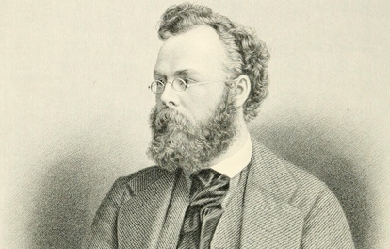
Robert Williams Buchanan (18 August 1841 – 10 June 1901) was a Scottish poet, novelist and dramatist. He was the son of Robert Buchanan (1813–1866), Owenite lecturer and journalist, and was born at Caverswall, Staffordshire, England. Buchanan senior, a native of Ayr, Scotland, lived for some years in Manchester, then moved to Glasgow, where Buchanan junior was educated, at the high school and the university, one of his fellow-students being the poet David Gray. His essay on Gray, originally published in the Cornhill Magazine, tells the story of their close friendship, and of their journey to London in 1860 in search of fame.

Everything that I write is about my personal life and things I've been through. I've been writing since I can remember and I won my first poetry contest in second grade and got it published in the school library. The next time, I was in 10th grade and the reason why I entered a contest was to prove that I in fact, did write the poem that was said to be "copywrited" and was offered to be published all over and I declined because I wasn't ready to share with the world, my life! Over the past 18 years I've lost quite a bit of my poetry and stopped writing due to having personal life issues as well as depression of losing my life story in multiple binders. So, less than a year ago I started writing my recent life story, again. So I hope everyone enjoys, the story of my love life over the past several years.

Hi, I'm Sara and I'm a 16 year old girl from the Northern United States. I'm in a relationship with an amazing guy, we've been together for five months and I love him with all of my heart. I love to write. I write about love, depression, or anything else I feel. This is my outlet and is leading me toward recovery from self harm, depression, anxiety, and Borderline Personality Disorder (BPD). These poems are my life. Thanks!

I adore words nearly as much as I adore music. I have always wanted to share some of my writing or Ramblings of Heart & Mind as I describe... So here goes I guess... I think some call it poetry? Words are like dance to me. When the lights go out, bass becomes the thunder & lightning is treble...I am rain. Mishi Bee 2013

Hey everyone! I'm Jessica, I'm lesbian and proud of it... I've been writing poetry since I was 14. Now 19 I feel like sharing them finally. Main thing is I hope you can relate to them. I'd love some feed back. Ohhhh! And please ignore the grammar mistakes, it's the only thing I have issues with... So let's start from the past to the present.

I am a small poet. I started in a program called Badgerdog in school. I started really writing in 7th grade in 2008. I was published in 6 or 7 books called "youth voices in ink" This was the Badgerdog book that allowed me to be published. I am a simple writer who loves to write for fun. I am 19 years old and am soon to turn 20 on Sep. 4th.


